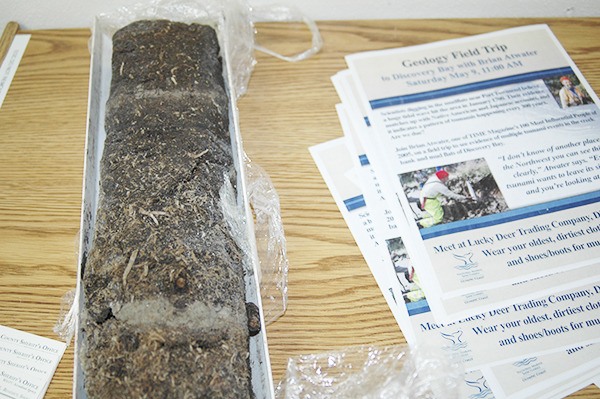Education Program and Community Preparedness Event
When: 7-9 p.m., Friday, May 8, and 11 a.m., Saturday, May 9.
Where: Friday: Port Angeles Public Library, 2210 S. Peabody St., and Saturday: Lucky Deer Trading Company in Discovery Bay, 282343 U.S. Highway 101.
More info: Penelope Linterman, Clallam County Emergency Management program coordinator, at 417-2483.
As a coastal community along the 800-mile long Cascadia Subduction Zone, Clallam County is due to undergo a powerful earthquake, resulting in a tsunami.
Through a variety of methods and ongoing research, earthquakes along the fault separating the Juan de Fuca and North American plates, between Vancouver Island and California, are thought to occur every 200-500 years, according to Federal Emergency Management Agency officials. Given the last major earthquake and tsunami along the Cascadia Subduction Zone occurred in 1700, local emergency management personnel have begun a series of workshops to ready for the multi-state, multi-county catastrophic earthquake and tsunami functional exercise known as “Cascadia Rising.”
Throughout the coming months, the planning sessions will focus on the roles and coordination among private, state, federal, military and tribal officials in the face of a 8-9 magnitude earthquake as estimated.
Spearheaded by Washington Gov. Jay Inslee and FEMA, the four-day exercise scheduled June 7-10, 2016, is intended to help train and prepare coastal communities along the subduction zone for the anticipated natural disaster by simulating field response operations.
Although Cascadia Rising isn’t planned until next year, local agencies and the public are encouraged to participate in a variety of workshops leading to the actual exercise in hopes of being ready,
Penelope Linterman, Clallam County Emergency Management program coordinator, explained. “The goal right now is to refine things and get as much involvement as possible,” she said. “The exercise is four days, but we’ll probably ‘play’ for two days.”
Once the exercise begins, it’s still undetermined whether or not mock evacuations are required for those within the tsunami inundation zone, but Linterman expects to have the details of the actual Cascadia Rising exercise by January.
In the meantime a “ramp-up” schedule full of workshops and presentation in preparation for the exercise kicked off in Clallam County with a presentation by Ian Miller, coastal hazards specialist with Washington Sea Grant and on the faculty at Peninsula Community College.
Miller shared some of his research and modeling completed to help educate officials at the U.S. Coast Guard’s air station/sector field office on Ediz Hook in the event of a tsunami to about 30 people representing a variety of agencies, such as the American Red Cross, police and fire department staff, U.S. Coast Guard, Olympic National Park and Peninsula Housing Authority, on April 23.
The Coast Guard’s existing emergency evacuation route relies on land passage, but Miller suggests that the road along Ediz Hook during a large magnitude earthquake and consequential tsunami may not be available.
“The Strait of Juan de Fuca has the potential for fairly large tsunamis,” Miller said. “I think we should prepare for worst case scenario and based on salt marshes in Discovery Bay, we definitely have record of these types of events.”
For those interested, evidence of past tsunamis can be seen first-hand during a field trip with U.S. Geological Survey geologist Brian Atwater scheduled as one of the county’s preliminary Cascadia Rising exercises Saturday, May 9. With Atwater’s guidance, the scars and patterns left within the sediment layers in the creek bank and mud flats in Discovery Bay by historic natural disasters will be identified and discussed.
Prior to the field trip on Friday, May 8, Atwater, along with presenters Brynne Walker, Jamie Valadez and Bella Voce, will give a variety of presentations on earthquake education and community preparedness.
The following week beginning at 10 a.m., Thursday, May 14, at the Port Angeles City Council chambers, 321 E. Fifth St., Linterman said, Lt. Col. Clayton Braun, with the Washington Army National Guard, is to discuss how the Washington Army National Guard will assist Olympic Peninsula residents in the event of a 9.0 earthquake.
“It’s an important talk you don’t want to miss,” Linterman said.
For more information about Cascadia Rising, visit nws.weather.gov/nthmp/2015annualmeeting/CascadiaRising.pdf.
Reach Alana Linderoth at alinderoth@sequimgazette.com.



